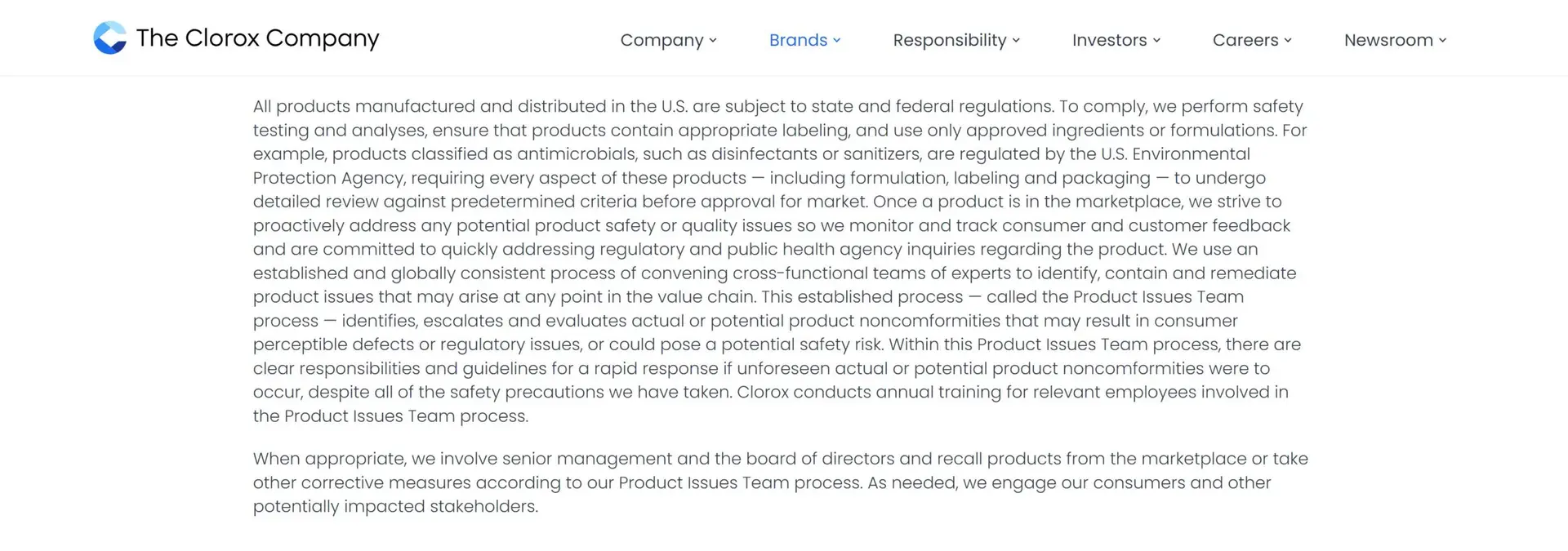When it comes to B2B content, we’ve all been there.
You wrote what you thought was your best blog post or case study. Maybe you put the finishing touches on your new website. You were proud of your work.
And then someone dumped all over it. The red sea of edits and corrections made you wonder what went wrong.
Let’s explore the six silent B2B content killers you don’t know you’re making. Then, I’ll show you how to fix them.
1. Long sentences
The shorter your sentences, the more readable they are. Aim for a maximum of 15 words per sentence, but don’t be obsessive about it. Varying sentence length holds readers’ interest and keeps your B2B content from being overly simplistic. In short, look for opportunities to cut when you can.
If you have to pause for a breath while reading aloud, it’s rife for trimming. This sentence from a management consulting firm checks that box:
“We’ve been a strategy thought leader for nearly five decades, and we bring unrivaled capabilities, tools, technologies, and talent to every engagement, augmented by an ecosystem of best-of-breed partners that provide specialized expertise.”
How to fix it
Push yourself to trim your word counts. Turn a 100-word e-blast into 50 words and then slash it to 25. If you’re feeling brave, cut another 10 words. If you’re stuck, you can prompt a generative artificial intelligence (AI) tool to shorten content for you. But if you do, make sure the content is accurate. AI rewrites are often incorrect.
Now, let’s rewrite the sentence above:
As a strategy thought leader for nearly five decades, our capabilities, tools, technologies and talent are unrivaled. Furthermore, our partners’ specialized expertise complements our services.
While the new sentence is more than 15 words, you’d have to gut the content to make it that short. It’s still better than ChatGPT’s version:
“For almost five decades, we’ve led in strategy and bring unmatched capabilities, tools, technologies and talent to each engagement, supported by a network of top partners with specialized expertise. “
AI changed the meaning of the sentence. Being a strategy thought leader doesn’t necessarily equate to leading in strategy. While the difference is subtle, it might not be correct. The business may have produced thought leadership content for five decades, but that doesn’t mean it excels at strategy. This is one example that illustrates why you don’t want to copy/paste AI content.
In addition, AI’s intro is clunky and wordy. One of my biggest issues with the intro is that it incorrectly substitutes “with” for “who have” in referencing the partners’ expertise. I see this error regularly from human writers.
2. Big text blocks
Long chunks of text are hard to read, like the one below from a manufacturing company. No one has the attention span to get through a wall of words like this.

How to fix it
Break your B2B content into small sections that people can scan quickly. Design elements that help with that include:
- Subheads
- Bullet points
- Callouts
- Pull quotes
- Photos
- Embedded videos
- Infographics
You can even write occasional one-sentence paragraphs to help readers breeze through your content. Be careful not to overdo it though. A little bit goes a long way as “The One-Sentence Paragraph: A Bad Idea” LinkedIn article points out.
3. Wordiness
Is your content bloated with extra words? Deadwood like “in order to,” “in need of” and “at the present time,” aren’t necessary. In fact, they’re often redundant. If you use AI tools to create B2B content, watch out for this bad habit.
Similarly, if you start sentences with “There are,” you’re wasting words. This is among the top mistakes new and veteran content creators make. It makes your content indirect and weak.
Here’s an example of a wordy sentence:
There are companies that operate within the B2B sector that must prioritize the implementation of innovative and forward-thinking strategies that align with overarching business objectives and goals in order to achieve optimal outcomes and results.
How to fix it
Resist the temptation to use three or more words when one will do. Trim wordy phrases and your audience will thank you. It becomes easier the more you do it. In addition, start each sentence with a strong subject and action-oriented phrase.
Now, I’ll prune that horrible sentence above:
B2B companies must prioritize innovative strategies that align with business goals to achieve optimal results.
Technically, I would have started the sentence with “Some,” but name a company that doesn’t have a strategy. Exactly – none.
4. Jargon and buzzwords
Jargon refers to industry-specific terms. The problem is that your prospective customers might not understand your content. If they don’t understand it, they won’t read it. Buzzwords are popular words in business environments, but have little meaning outside the workplace. As with jargon, they can make your B2B content complex and difficult to grasp.
Jargon examples by industry
Every industry has its own jargon, including marketing. (When you know, you know!) If you work in any of the professions below, you’ll recognize these:
Finance
- Arbitrage
- Asset allocation
- Liquidity
- Subprime lending
- Yield curve
Logistics
- Carrier procurement
- Cross-docking
- Intermodal transportation
- Pick and pack
- Transloading
Manufacturing
- Just-in-time manufacturing
- Poka-yoke
- Root cause analysis
- Takt time
- Value stream mapping
Tech
- Agile development
- Back-end
- Endpoint
- Full stack
- Open source
Business buzzwords
These business buzzwords are popular, particularly in the corporate world:
- Best-in-class
- Best-of-breed
- Cutting edge
- Ecosystem
- Human capital
- Leverage
- Mission-critical
- Monetize
- Rightsizing
- Unparalleled
- Use cases
- Value proposition
How to fix it
Extend your reach and impress your audience with clear, concise content in plain English. Simple words can help expand your B2B content’s appeal and accessibility. If you’re not sure how to translate your industry lingo for a diverse audience, you can ask AI or a thesaurus for alternate words.
5. Passive voice
Passive voice makes content less direct and can obscure who’s performing the action. In passive voice, the subject of the sentence receives the action rather than performing it. Two examples follow:
Sales leads were generated through various digital marketing initiatives.
Valuable insights were provided by customer feedback, which shaped our product development strategy.
How to fix it
Rewrite your B2B content in active voice. Identify who or what is performing the action and use that as the subject for your passive voice sentences.
Let’s try those again:
Digital marketing initiatives helped us generate sales leads.
Customer feedback provided valuable insights that helped us shape our product development strategy.
6. Random capitalization
Capitalizing words that aren’t proper nouns detracts from your company’s credibility. And doing so doesn’t make the words more important than if you don’t capitalize them.
Here’s a product example:
“Our premier copper and fiber structured cabling solution has a 25-year warranty” is correct.
“Our premier Copper and Fiber Structured Cabling solution has a 25-year warranty” isn’t correct.
Copper and fiber structured cabling is a generic product that any company can offer. It’s not an official product name.
Let’s look at a service:
“Our Create and Captivate® graphic design service will help you bring your brand to life” is correct.
“Our professional Graphic Design services will help you bring your brand to life” isn’t correct.
Graphic design is a general creative service that’s widely available. Other examples of general services that aren’t capitalized include wealth planning, construction management and package assembly.
How to fix it
If your products and services aren’t branded or they aren’t one of a kind, don’t capitalize them. The same goes for general industry terms.
The simplest way to ensure consistency is to create a content style guide that includes writing, grammar and punctuation rules for your brand. While some businesses use the Associated Press Stylebook or The Chicago Manual of Style, others follow their own in-house style. Whichever one you choose (or a combination), be sure to share it with all of your content creators.
You’ve got this
The first step to improving your B2B content is to apply these six fixes. It might take practice, but everything worth doing requires a commitment. If this list is overwhelming, become proficient in one or two and then work your way through the rest one at a time. You can do it!



